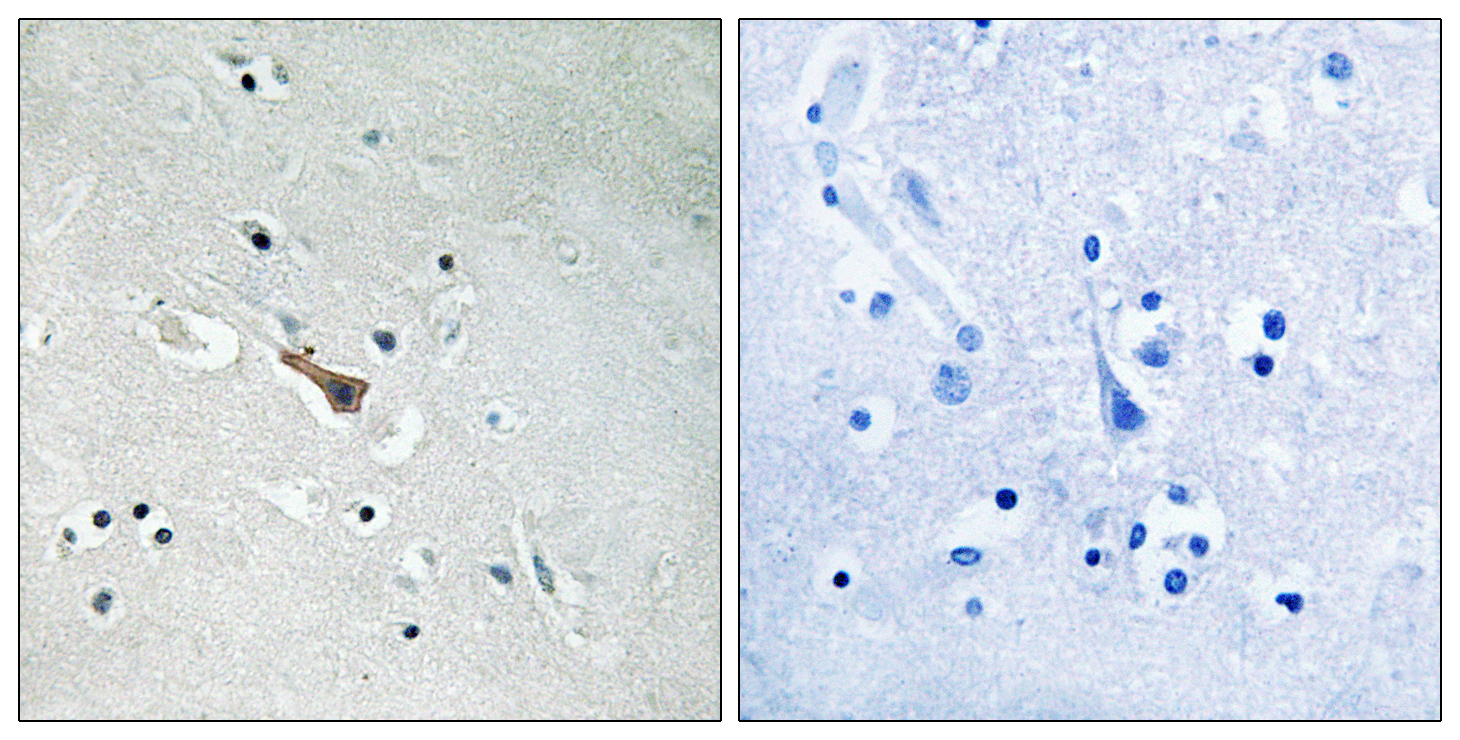APLP2 (phospho Tyr755) Polyclonal Antibody
- Catalog No.:YP1079
- Applications:IHC;IF;ELISA
- Reactivity:Human;Mouse;Rat
- Target:
- APLP2
- Gene Name:
- APLP2
- Protein Name:
- Amyloid-like protein 2
- Human Gene Id:
- 334
- Human Swiss Prot No:
- Q06481
- Mouse Gene Id:
- 11804
- Mouse Swiss Prot No:
- Q06335
- Rat Swiss Prot No:
- P15943
- Immunogen:
- The antiserum was produced against synthesized peptide derived from human APLP2 around the phosphorylation site of Tyr755. AA range:714-763
- Specificity:
- Phospho-APLP2 (Y755) Polyclonal Antibody detects endogenous levels of APLP2 protein only when phosphorylated at Y755.
- Formulation:
- Liquid in PBS containing 50% glycerol, 0.5% BSA and 0.02% sodium azide.
- Source:
- Polyclonal, Rabbit,IgG
- Dilution:
- IHC 1:100 - 1:300. ELISA: 1:20000.. IF 1:50-200
- Purification:
- The antibody was affinity-purified from rabbit antiserum by affinity-chromatography using epitope-specific immunogen.
- Concentration:
- 1 mg/ml
- Storage Stability:
- -15°C to -25°C/1 year(Do not lower than -25°C)
- Other Name:
- APLP2;APPL2;Amyloid-like protein 2;APLP-2;APPH;Amyloid protein homolog;CDEI box-binding protein;CDEBP
- Molecular Weight(Da):
- 87kD
- Background:
- This gene encodes amyloid precursor- like protein 2 (APLP2), which is a member of the APP (amyloid precursor protein) family including APP, APLP1 and APLP2. This protein is ubiquitously expressed. It contains heparin-, copper- and zinc- binding domains at the N-terminus, BPTI/Kunitz inhibitor and E2 domains in the middle region, and transmembrane and intracellular domains at the C-terminus. This protein interacts with major histocompatibility complex (MHC) class I molecules. The synergy of this protein and the APP is required to mediate neuromuscular transmission, spatial learning and synaptic plasticity. This protein has been implicated in the pathogenesis of Alzheimer's disease. Multiple alternatively spliced transcript variants encoding different isoforms have been identified. [provided by RefSeq, Aug 2011],
- Function:
- alternative products:Additional isoforms seem to exist,function:May play a role in the regulation of hemostasis. The soluble form may have inhibitory properties towards coagulation factors. May interact with cellular G-protein signaling pathways. May bind to the DNA 5'-GTCACATG-3'(CDEI box). Inhibits trypsin, chymotrypsin, plasmin, factor XIA and plasma and glandular kallikrein.,PTM:The BPTI/Kunitz inhibitor domain is O-glycosylated.,similarity:Belongs to the APP family.,similarity:Contains 1 BPTI/Kunitz inhibitor domain.,subunit:Interacts with CPEB1.,tissue specificity:In placenta, brain, heart, lung, liver, kidney and endothelial tissues.,
- Subcellular Location:
- Cell membrane ; Single-pass type I membrane protein . Nucleus .
- Expression:
- Expressed in placenta, brain, heart, lung, liver, kidney and endothelial tissues.
- June 19-2018
- WESTERN IMMUNOBLOTTING PROTOCOL
- June 19-2018
- IMMUNOHISTOCHEMISTRY-PARAFFIN PROTOCOL
- June 19-2018
- IMMUNOFLUORESCENCE PROTOCOL
- September 08-2020
- FLOW-CYTOMEYRT-PROTOCOL
- May 20-2022
- Cell-Based ELISA│解您多样本WB检测之困扰
- July 13-2018
- CELL-BASED-ELISA-PROTOCOL-FOR-ACETYL-PROTEIN
- July 13-2018
- CELL-BASED-ELISA-PROTOCOL-FOR-PHOSPHO-PROTEIN
- July 13-2018
- Antibody-FAQs
- Products Images

- Immunohistochemistry analysis of paraffin-embedded human brain, using APLP2 (Phospho-Tyr755) Antibody. The picture on the right is blocked with the phospho peptide.



